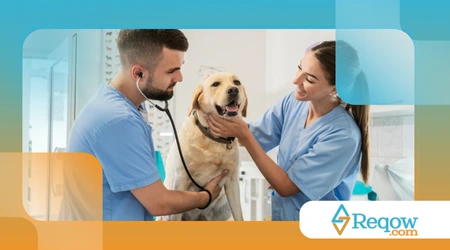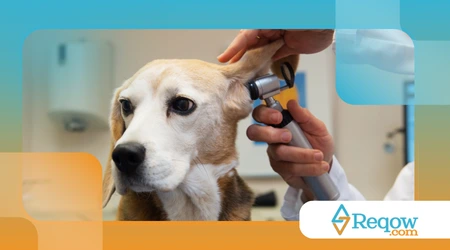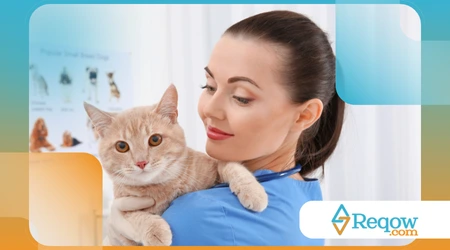Pets and Vet Visits: How to Prepare Your Pet and Reduce Stress

Visits to the vet. For many animals, the veterinary clinic represents unfamiliar and often frightening territory.
Advertisements
Different smells, strange sounds and the presence of other animals can trigger a range of negative reactions.
Preparation begins long before the appointment. It's an ongoing process of socialization and desensitization, building a positive association with the veterinary environment.
This crucial step can turn what would otherwise be a nightmare into a more peaceful and even rewarding experience. Imagine your pet walking into the clinic with their tail wagging.
Early Preparation: The Key to Success
Starting early preparation is the most effective strategy. Puppies and kittens adapt more easily to new experiences.
Advertisements
Take your puppy on walks near the clinic to familiarize him with the area. Just observing the outside can be a good start.
Rewarding calm behavior during these walks is essential to creating a positive memory. A tasty treat can work wonders.
Read more: How to understand your pet's body language: signs you may be ignoring
For cats, start by associating the carrier with positive emotions. Leave it open at home, with comfortable blankets and toys.
This way, the box becomes a refuge, not an item used only for stressful trips. This makes transporting it to the clinic much easier.
Desensitization and Counterconditioning: Powerful Techniques
Desensitization involves gradually exposing your pet to visitor-related stimuli. Start at home, familiarizing your pet with touching and handling.
Simulate examinations by touching paws, ears, mouth, and abdomen. Reward generously for each positive interaction.
Counterconditioning aims to change the animal's emotional response. Associate the clinic or procedures with pleasant experiences.
Offer high-value treats only during the exam or in the waiting room. This helps create a positive association.
A good example is when your dog feels apprehensive about being lifted onto the examination table. Start simulating this at home by lifting him for short periods.
Offer a favorite toy or treat immediately. Gradually increase the time and height, always associating it with something pleasurable.

The Fundamental Role of Transportation
The carrier, for cats and small dogs, is a crucial element. It should be a safe place, not a source of fear.
Keep the crate available at home as part of your furniture. Place toys, treats, and blankets that smell like your pet inside.
++ Complete Checklist of What to Take When Going Out with Your Pet: From Walks to Travel
For larger dogs, the car is the preferred mode of transportation. Take short, pleasant trips without always having to go to the clinic.
Take him to a park or a place he likes. This way, the car won't just be synonymous with vet visits.
Arrival at the Clinic: Minimizing the Impact
When you arrive, avoid the crowded waiting room if possible. Ask if there's a quieter time or a separate area to wait.
Stay calm. Your anxiety can easily be sensed and mimicked by your pet. Take a deep breath and demonstrate confidence.
Bring a favorite toy or a blanket that smells like home. This can provide a sense of familiarity and comfort.
Talk to your veterinarian about a "familiarization visit." A quick visit without any tests can be very beneficial.
During the Consultation: Support Strategies
Be an active agent in your pet's comfort. Keep them close, talk to them in a calm voice, and offer affection.
Use the rewards he likes most. A jar of peanut butter or pâté can distract him during quick procedures.
If your pet is very anxious, ask your veterinarian about using synthetic pheromones or mild anti-anxiety medications.
Pheromones, such as Feliway for cats or Adaptil for dogs, can help reduce anxiety naturally. They mimic comfort pheromones.
More information: Teaching your dog to be alone without suffering: techniques beyond the “box”
Medication, if necessary, should be prescribed and administered under veterinary supervision. It can be a game-changer in severe cases.
A relevant statistic: according to the American Veterinary Medical Association (AVMA), approximately 30% of dogs and 40% of cats demonstrate some level of anxiety. vet visits.

Post-Consultation: Keeping the Good Vibes Going
When you return home, continue to associate the experience with something positive. Offer a special treat or playtime.
Avoid scolding your pet if it becomes agitated. Be patient and understanding, reinforcing home security.
Observe your pet's behavior in the following hours. Any signs of discomfort should be reported to your veterinarian.
Stress Management in Different Species: A Personalized Approach
Every animal has its own peculiarities. A dog may react differently than a cat, and even individuals of the same species can vary.
| Species | Common Reactions to Stress | Stress Reduction Strategies |
| Dogs | Excessive barking, tremors, aggression, vocalization, urination. | Gradual desensitization, positive reinforcement training, pheromones, distraction toys. |
| Cats | Vocalization, salivation, aggression, hiding, goosebumps, inappropriate vocalization, defecation or urination. | Family carrier, pheromones, towel with home scent, avoid direct eye contact, natural sedatives. |
| Small Rodents | Freeze, run, bite, panting, eyes wide. | Transport in a familiar environment, provide forage for hiding, avoid sudden movements, speak softly. |
| Birds | Flapping wings, feather plucking, excessive vocalization, respiratory stress. | Family cage, partially cover the cage, avoid loud noises, speak in a calm tone. |
The Importance of a Friendly Veterinarian: An Essential Partnership
Choosing a veterinarian who adopts approaches fear-free (Freedom from fear) can make all the difference. These professionals are trained to minimize stress.
They use techniques such as using pheromone-scented towels, snacks during the consultation, and calm environments.
This partnership between guardian and veterinarian is essential to ensure the animal's well-being and the success of the vet visits.
Think of the veterinary clinic as a school for your pet, where each vet visits It's a new lesson. If the first experiences are positive, he'll learn to "enjoy going to school," associating it with good things rather than something scary.
A More Peaceful Future
Preparing your pet for the vet visits It's an investment in their physical and mental health. It's an act of love and responsibility that transforms fear into comfort.
With patience, training, and the collaboration of your veterinarian, visits to the clinic can become a routine and even enjoyable part of your companion's life. It's not an unattainable goal. After all, your best friend's health deserves the utmost care, right?
Frequently Asked Questions
My pet gets very stressed in the waiting room. What can I do?
Ask the clinic about waiting in the car or a quieter area. Bring toys and treats to distract your dog.
My cat hates the carrier. How can I help?
Leave the crate open at home, with blankets and toys inside. Associate it with positive things, like food or play.
My dog is aggressive at the vet. What should I do?
Report this to your veterinarian. They may suggest pheromones, anti-anxiety medications, or even a home visit, if available.
Can I give natural sedatives before the appointment?
Always consult your veterinarian before administering any type of sedative, natural or otherwise. The dosage and type should be appropriate for your pet.
How often should I take my pet to the vet without an exam?
If the clinic allows it, make quick, informal visits just to let your pet get used to the environment and receive a treat from the staff. This helps create positive associations.
